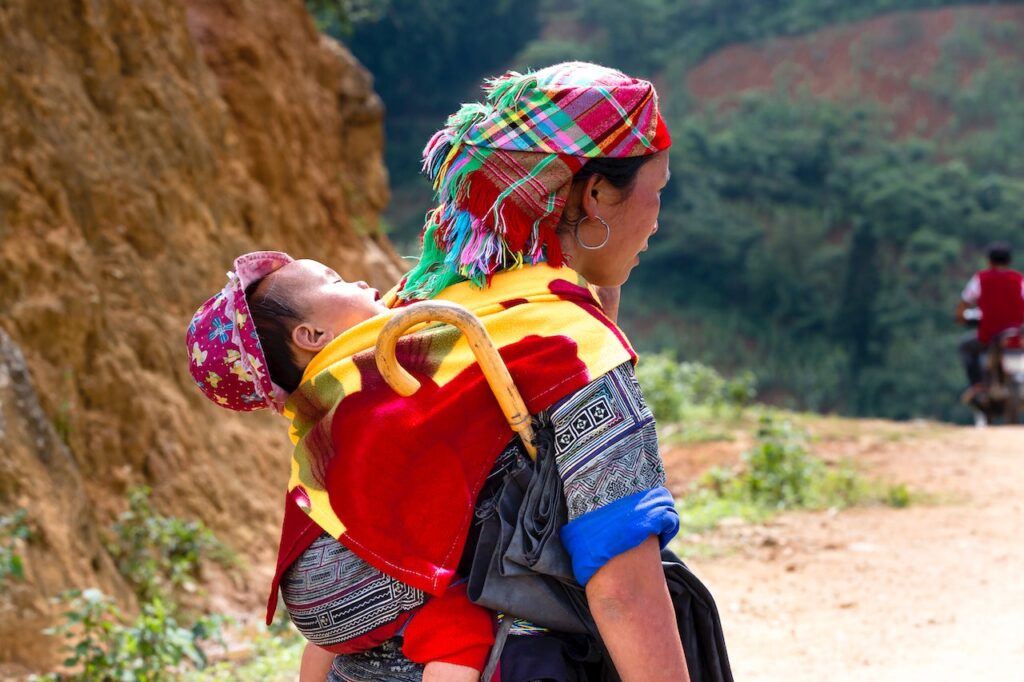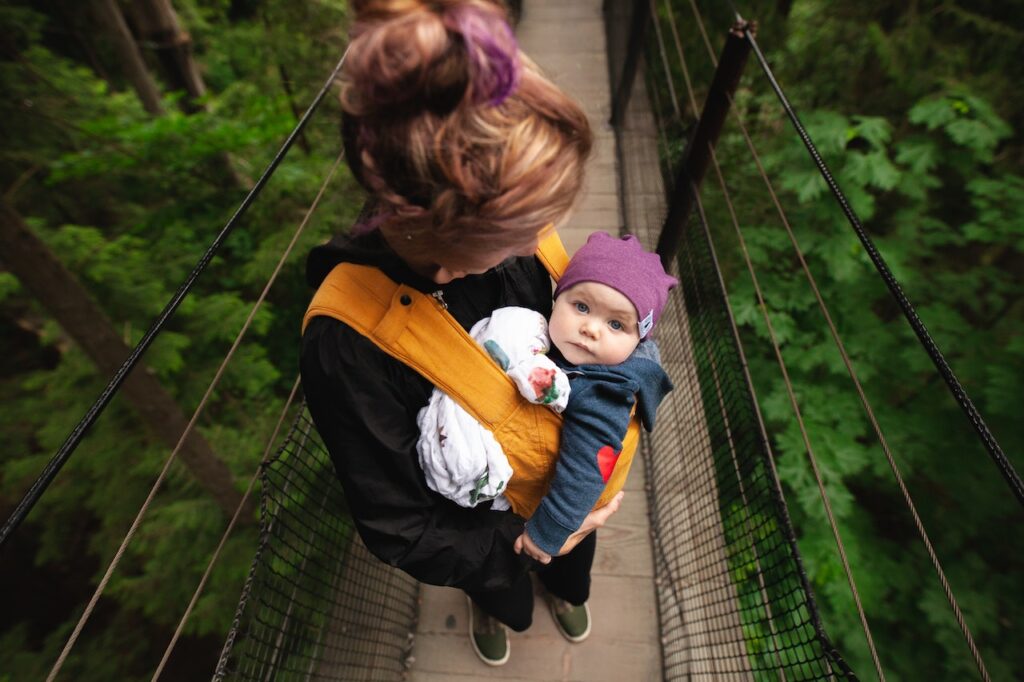Toddler Back Carrier: The Ultimate Guide for Parents

Toddler back carriers have become increasingly popular among parents who want to carry their little ones while keeping their hands free. These carriers are designed to distribute the weight of the child evenly across the parent’s back, making it a comfortable and convenient option for both parent and child. In this article, we will explore the different types of toddler back carriers, their key features, and the benefits of using them.
Understanding the different types of toddler back carriers is essential to making an informed decision when purchasing one. There are several types of carriers available in the market, including soft-structured carriers, frame backpacks, and mei tais. Each type has its unique features, advantages, and disadvantages, and it’s crucial to understand them before making a purchase. Additionally, parents must consider the age and size of their child, as well as their own body type and preferences.
When choosing a toddler back carrier, there are several key features to consider, such as the weight limit, adjustability, and comfort. The weight limit is particularly important as it determines the maximum weight the carrier can hold safely. Adjustability is also crucial, as it allows the carrier to fit different body types and sizes. Comfort is another essential feature, as it ensures that both parent and child are comfortable during extended periods of use. By considering these key features, parents can choose a carrier that meets their needs and preferences.
Key Takeaways
- There are different types of toddler back carriers, including soft-structured carriers, frame backpacks, and mei tais, each with its unique features.
- Key features to consider when choosing a toddler back carrier include weight limit, adjustability, and comfort.
- Toddler back carriers are a convenient and comfortable option for both parent and child, allowing parents to carry their little ones while keeping their hands free.

Understanding Toddler Back Carriers
A toddler back carrier is a type of baby carrier designed to carry toddlers on the back of the parent or caregiver. It is a popular choice for parents who want to carry their toddlers on outdoor adventures or for extended periods of time. Toddler back carriers are different from other types of baby carriers because they are designed to carry heavier weight and have a larger frame to support the child’s weight.
There are two main types of toddler back carriers: soft-structured carriers and structured baby carriers. Soft-structured carriers are made of soft, flexible materials that mold to the shape of the child’s body. They are lightweight and easy to adjust, making them a popular choice for parents who want a carrier that is easy to use. Structured baby carriers, on the other hand, are made of more rigid materials that provide more support for the child’s weight. They are often heavier and more difficult to adjust, but they are better suited for carrying heavier toddlers for longer periods of time.
When choosing a toddler back carrier, it is important to consider the weight and height of the child, as well as the size and shape of the parent or caregiver. Some carriers are designed specifically for petite parents, while others are designed for taller or larger parents. It is also important to consider the features of the carrier, such as the type of straps, the amount of padding, and the storage options.
Toddler back carriers are a great way for parents to keep their toddlers close and comfortable while on the go. They provide a hands-free way to carry a child, while also allowing the child to see and experience the world around them. Whether it’s a hike in the mountains or a trip to the grocery store, a toddler back carrier can make life easier for both parent and child.
Different Types of Toddler Back Carriers
Wrap
Wraps are a popular type of toddler back carrier that is made from a long piece of fabric that is wrapped around the wearer’s body and the child. They provide a snug fit and allow for a variety of carrying positions. Wraps can be made from a variety of materials, including cotton, bamboo, and linen.
Tula
Tula carriers are a popular brand of toddler back carrier that come in a variety of styles and designs. They are known for their ergonomic design and comfortable fit. The Tula toddler carrier is designed for children over 25 pounds and can be worn on the front or back.
Carryon
The Líllébaby Carryon Airflow is a popular type of toddler back carrier that is designed for children between 20 and 60 pounds. It features a mesh panel for breathability and a lumbar support system for added comfort. The Carryon can be worn on the front or back and comes in a variety of colors and designs.
Ergobaby
The Ergobaby 360 is a popular type of toddler back carrier that is designed for children between 12 and 45 pounds. It features a structured bucket seat and adjustable straps for a comfortable fit. The Ergobaby 360 can be worn on the front or back and comes in a variety of colors and designs.
Preschool Carrier
Preschool carriers are designed for older children who still need to be carried for longer distances. They typically have a higher weight limit and a larger seat than other toddler back carriers. The Tula Preschool carrier is designed for children between 35 and 70 pounds and can be worn on the front or back.
Ring Sling
Ring slings are a type of toddler back carrier that are made from a long piece of fabric with two rings attached to one end. The fabric is threaded through the rings and tightened to create a secure hold. Ring slings can be worn on the front or back and are popular for their versatility and ease of use.
Backpacks
Backpacks are a popular type of toddler back carrier that are designed for longer hikes and outdoor activities. They typically have a frame and a built-in seat for added support and comfort. The Beco Toddler Carrier is a popular type of backpack carrier that is designed for children between 20 and 60 pounds.
Piggyback Rider
The Piggyback Rider is a unique type of toddler back carrier that is designed for children between 2 and 7 years old. It features a standing platform and shoulder straps for the child, allowing them to stand and ride on the wearer’s back. The Piggyback Rider is popular for its compact size and ease of use.
In conclusion, there are a variety of different types of toddler back carriers available on the market, each with their own unique features and benefits. When choosing a toddler back carrier, it’s important to consider the child’s weight and age, as well as the wearer’s comfort and preferences.

Key Features to Consider in a Toddler Back Carrier
When shopping for a toddler back carrier, there are several key features to consider to ensure that the carrier is comfortable, safe, and versatile. Below are some of the most important features to keep in mind when selecting a toddler back carrier.
Comfort
One of the most important features to consider when selecting a toddler back carrier is comfort. A comfortable carrier can make all the difference when it comes to long hikes or walks. Look for carriers with extra padding, adjustable shoulder straps, and waist belts to help distribute weight evenly. Additionally, breathable mesh and mesh panels can help keep both the parent and child cool and comfortable.
Size
Toddler back carriers come in a range of sizes, so it is important to select one that fits both the parent and child comfortably. Look for carriers with adjustable seats and shoulder straps to ensure a proper fit. Some carriers also come with hip belts to help distribute weight and provide additional support.
Weight Limit
It is important to check the weight limit of a toddler back carrier before purchasing. Most carriers have weight limits ranging from 40 to 50 pounds. Be sure to select a carrier that can accommodate the weight of both the child and any gear that will be carried.
Safety
Safety is a top priority when it comes to toddler back carriers. Look for carriers with secure waist belts and shoulder straps, as well as chest straps and lumbar pads for additional support. Some carriers also come with sun canopies to protect the child from harmful UV rays.
Versatility
A versatile toddler back carrier can be used for a variety of activities, from hiking to running errands. Look for carriers with adjustable shoulder straps and waist belts to accommodate different activities and body types. Some carriers also come with storage pockets for carrying essentials like snacks and water bottles.
Storage
Storage is another important feature to consider when selecting a toddler back carrier. Look for carriers with ample storage space for essentials like diapers, wipes, and extra clothing. Some carriers also come with detachable backpacks for additional storage.
Benefits of Using a Toddler Back Carrier
Using a toddler back carrier has many benefits for both the parent and the child. Here are some of the benefits:
Hands-Free
One of the most significant benefits of using a toddler back carrier is that it allows the parent to be hands-free while carrying the child. This is especially useful when the parent needs to do other tasks that require the use of their hands. For example, a parent can carry their child on their back while doing household chores or grocery shopping.
Child Comfort
Toddler back carriers are designed to provide maximum comfort for the child. They are equipped with padded straps and back support to ensure that the child is comfortable while being carried. The carrier also allows the child to be in an upright position, which is more comfortable for them than being in a stroller or car seat for extended periods.
Hip-Healthy
Using a toddler back carrier is also beneficial for the child’s hip development. The carrier allows the child’s legs to be in a spread-squat position, which is the optimal position for hip development. This position promotes healthy hip joint development and reduces the risk of hip dysplasia.
Good Head and Neck Control
Toddler back carriers also provide good head and neck support for the child. The carrier’s design ensures that the child’s head and neck are supported, which is especially important for younger children who may not have developed strong neck muscles yet.
In conclusion, using a toddler back carrier has many benefits for both the parent and the child. It allows the parent to be hands-free while carrying the child, provides maximum comfort for the child, promotes healthy hip development, and provides good head and neck support.

Buying Guide for Toddler Back Carriers
When it comes to buying a toddler back carrier, there are several factors to consider to ensure you get the best one for your needs. Here are some things to keep in mind:
Comfort and Safety
The most important factor to consider when buying a toddler back carrier is comfort and safety. Look for carriers with padded shoulder straps and waist belts to distribute weight evenly and reduce pressure points. Also, make sure the carrier has a sturdy frame and secure harness to keep your child safe and secure.
Size and Weight Capacity
Ensure that the carrier you choose is the right size for you and your child. Check the weight capacity of the carrier to ensure it can support your child’s weight. Some carriers are designed to accommodate toddlers up to 50 pounds, while others are limited to 30 pounds or less.
Ease of Use
Choose a carrier that is easy to use and adjust. Look for carriers with adjustable straps and buckles to ensure a secure fit. Additionally, consider carriers that are easy to load and unload your child from, especially if you plan to use it frequently.
Best Carriers for Toddlers
There are several carriers on the market that are designed specifically for toddlers. Some popular options include the Deuter Kid Comfort, Osprey Poco Plus, and Thule Sapling Elite. Research these carriers and read reviews to determine which one is best for you.
Unique Gift Ideas
A toddler back carrier can make a unique and practical gift for parents with young children. Consider purchasing a carrier as a baby shower gift or for a child’s first birthday. You can find carriers for sale at outdoor retailers, baby stores, and online marketplaces such as Etsy.
Selling
If you have a toddler back carrier that you no longer need, consider selling it online. You can list it on online marketplaces such as eBay or Facebook Marketplace, or sell it locally through classified ads or consignment shops.
By considering these factors, you can find a toddler back carrier that is comfortable, safe, and easy to use, and that meets your specific needs.
Tips for Using a Toddler Back Carrier
Using a toddler back carrier can be a convenient way to keep your little one close while still having your hands free. However, it’s important to use the carrier correctly to ensure your child’s safety and comfort. Here are some tips for using a toddler back carrier:
1. Choose the Right Carrier
Make sure to choose a carrier that is appropriate for your child’s age and weight. Some carriers are designed for infants, while others are better suited for toddlers. Look for carriers with adjustable straps and waistbands to ensure a comfortable fit for both you and your child.
2. Practice with a Doll or Stuffed Animal
Before using the carrier with your child, practice with a doll or stuffed animal to get a feel for how the carrier works. This will help you adjust the straps and get comfortable with the carrier before putting your child in it.
3. Follow the Instructions
Make sure to read and follow the instructions that come with your carrier. Each carrier is different, and following the instructions will ensure that you are using the carrier correctly.
4. Use the Right Carry Position
There are two main carry positions for toddler back carriers: front carry and back carry. For older toddlers, back carry is usually the preferred position, as it allows for better weight distribution and more mobility.
5. Check the Fit
Make sure that the carrier is adjusted properly and fits snugly against your body. Check that your child’s legs are in the correct position and that their weight is evenly distributed.
6. Take Breaks
Using a toddler back carrier can be tiring, especially for longer periods of time. Make sure to take breaks and rest your back and shoulders as needed.
By following these tips, you can ensure a safe and comfortable experience when using a toddler back carrier.
Toddler Back Carriers and Travel
Traveling with a toddler can be a daunting task, especially when it comes to carrying them around. A toddler back carrier can be a great solution for parents who want to keep their child close and still have their hands free. These carriers are designed to provide comfort and support for both the parent and the child while on the go.
When choosing a toddler back carrier for travel, it is important to consider factors such as weight, comfort, and ease of use. Look for carriers that are lightweight and easy to pack, but also provide ample support for your child’s back and head. Adjustable straps and padded waist belts can help distribute weight evenly and prevent discomfort for the parent.
Another important consideration is the type of travel you will be doing. If you will be hiking or walking long distances, look for a carrier with a sturdy frame and good suspension. For air travel, consider a carrier that is compact and easy to carry on board.
When using a toddler back carrier for travel, it is important to follow safety guidelines and ensure that your child is secure at all times. Always use the provided harness and make sure it is adjusted properly for your child’s size. Keep in mind that your child’s weight will affect your balance, so be cautious when walking on uneven terrain or in crowded areas.
Overall, a toddler back carrier can be a great investment for parents who love to travel and want to keep their child close. With the right carrier and proper safety precautions, traveling with a toddler can be a fun and rewarding experience for the whole family.
Toddler Back Carriers for Older Children
Toddler back carriers are an excellent way to transport children while hiking or traveling. These carriers are designed to be comfortable for both the child and the adult carrying them. Although most toddler back carriers are designed for children up to 40 pounds, there are also options available for older children.
For parents with older children, it can be challenging to find a carrier that can accommodate their child’s weight and size. However, some toddler back carriers are designed to hold children up to 60 pounds, making them an excellent option for parents with older children.
When choosing a toddler back carrier for an older child, there are a few things to consider. First, it’s essential to choose a carrier that can support the child’s weight comfortably. Look for carriers with sturdy frames and adjustable straps to ensure a secure fit.
Second, it’s crucial to choose a carrier that is comfortable for the child. Look for carriers with padded seats and adjustable footrests to ensure a comfortable ride for your child. Additionally, some carriers come with sunshades or rain covers, which can be beneficial for outdoor adventures.
Finally, it’s essential to choose a carrier that is comfortable for the adult carrying it. Look for carriers with padded straps and waist belts to distribute the weight evenly across the body. Some carriers also come with storage compartments, which can be useful for carrying snacks, water bottles, and other essentials.
Overall, toddler back carriers for older children are an excellent option for parents who enjoy hiking or traveling with their children. With the right carrier, parents can enjoy outdoor adventures with their children while keeping them safe and comfortable.
Toddler Back Carriers for Different Climates
When choosing a toddler back carrier, it’s important to consider the climate you’ll be using it in. Different carriers are designed to accommodate various weather conditions, ensuring your child stays comfortable and safe. Here are some factors to consider when choosing a toddler back carrier for different climates:
Warm Climates
For warm climates, it’s essential to choose a carrier that is breathable and lightweight. Look for carriers made from materials like mesh or breathable fabric to keep your child cool and comfortable. Some carriers even come with a built-in sunshade to protect your child from harmful UV rays.
It’s also important to choose a carrier with adjustable straps and a comfortable waistband to distribute weight evenly and prevent discomfort. Consider carriers with moisture-wicking fabric to prevent sweat buildup and keep your child dry.
Cold Climates
When using a carrier in cold climates, it’s important to choose a carrier that provides ample insulation and protection from the elements. Look for carriers made from materials like wool or fleece to keep your child warm and cozy.
Some carriers also come with a built-in rain cover to protect your child from rain or snow. It’s also important to choose a carrier with adjustable straps and a comfortable waistband to ensure your child stays secure and warm.
Moderate Climates
For moderate climates, consider a carrier that is versatile and can be used in a variety of weather conditions. Look for carriers made from durable materials that can withstand both warm and cold temperatures.
Consider carriers with adjustable straps and a comfortable waistband to ensure your child stays comfortable and secure. Look for carriers with a removable sunshade or rain cover to accommodate changing weather conditions.
Overall, when choosing a toddler back carrier for different climates, it’s important to consider your child’s comfort and safety. Look for carriers with adjustable straps, breathable materials, and ample protection from the elements to ensure your child stays comfortable and secure in any weather condition.
Subscription and Contact Information
For those interested in purchasing a toddler back carrier, it is recommended to subscribe to the manufacturer’s newsletter. This will keep you up to date on any new products, promotions, and sales. To subscribe, simply enter your email address on the manufacturer’s website and confirm your subscription through the confirmation email that you will receive.
If you have any questions or concerns regarding the toddler back carrier, it is recommended to contact the manufacturer directly. You can find the manufacturer’s contact information on their website, which may include an email address, phone number, or physical address.
It is important to note that some websites may include affiliate links to the toddler back carrier. These links allow the website to earn a commission if a purchase is made through the link. However, this does not affect the price of the product for the buyer.
To prevent spam and ensure that only real people are subscribing or contacting the manufacturer, some websites may include a captcha verification. This requires the user to complete a task, such as typing in a series of letters or selecting certain images, to prove that they are not a bot.
If you are having trouble accessing the manufacturer’s website or subscribing to their newsletter, it may be due to ad blockers or browser settings. Some ad blockers may prevent certain elements of a website from loading, including subscription forms or contact information. Adjusting browser settings or disabling ad blockers may resolve these issues.
Overall, subscribing to the manufacturer’s newsletter and contacting them directly with any questions or concerns is the best way to stay informed and ensure a smooth purchasing experience.
Frequently Asked Questions
What is the weight limit for child backpack carriers?
The weight limit for child backpack carriers varies by brand and model, but most carriers can hold children up to 50 pounds. It is important to check the weight limit of the carrier before purchasing and to ensure that it is appropriate for the weight of your child.
What are some recommended toddler carriers for hiking?
Some recommended toddler carriers for hiking include the Deuter Kid Comfort, Osprey Poco AG Plus, and Thule Sapling Elite. These carriers are designed with features to provide comfort and support for both the child and the wearer during extended hikes.
What is the best toddler carrier for travel?
The best toddler carrier for travel depends on the specific needs and preferences of the wearer and child. Some popular options include the Ergobaby Omni 360, Tula Explore, and LILLEbaby Complete. These carriers are designed to be versatile and comfortable for both the wearer and child during travel.
Is there a recommended age for using a backpack carrier?
There is no specific recommended age for using a backpack carrier, as every child develops at their own pace. However, most carriers are designed for children between 6 months and 4 years old.
Can you carry a 2 year old in a backpack carrier?
Yes, most backpack carriers are designed to hold children up to 50 pounds, which typically includes 2 year olds. It is important to check the weight limit of the carrier before purchasing and to ensure that it is appropriate for the weight of your child.
Are there any carriers specifically designed for older children?
Yes, some carriers are designed specifically for older children, such as the Deuter Kid Comfort Pro and the Osprey Poco Plus. These carriers are designed with features to provide comfort and support for older and heavier children during extended hikes or outings.


